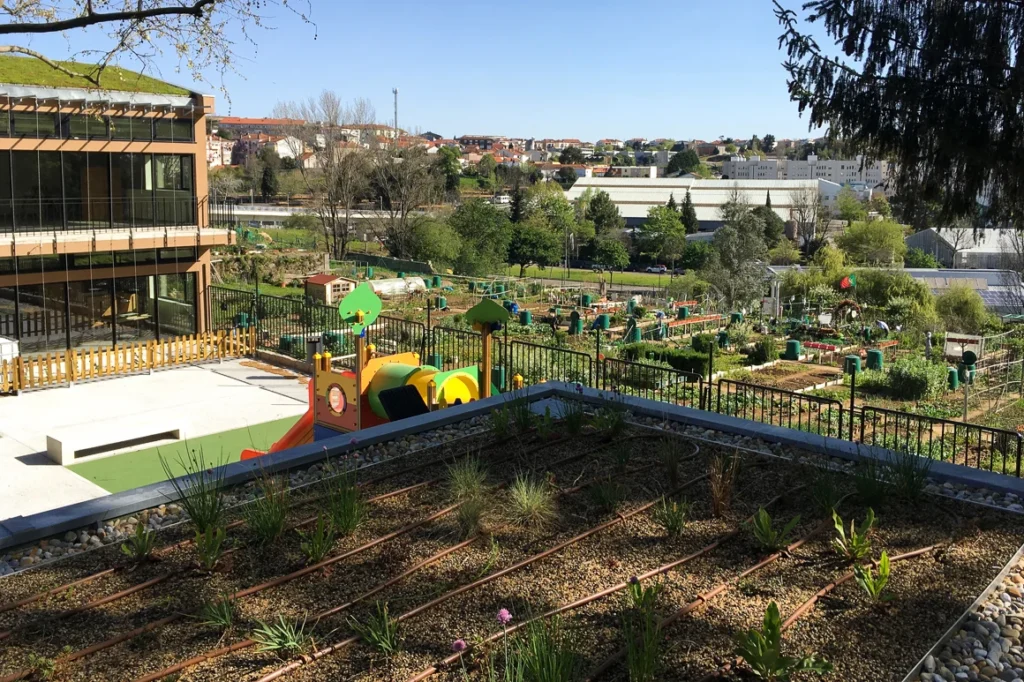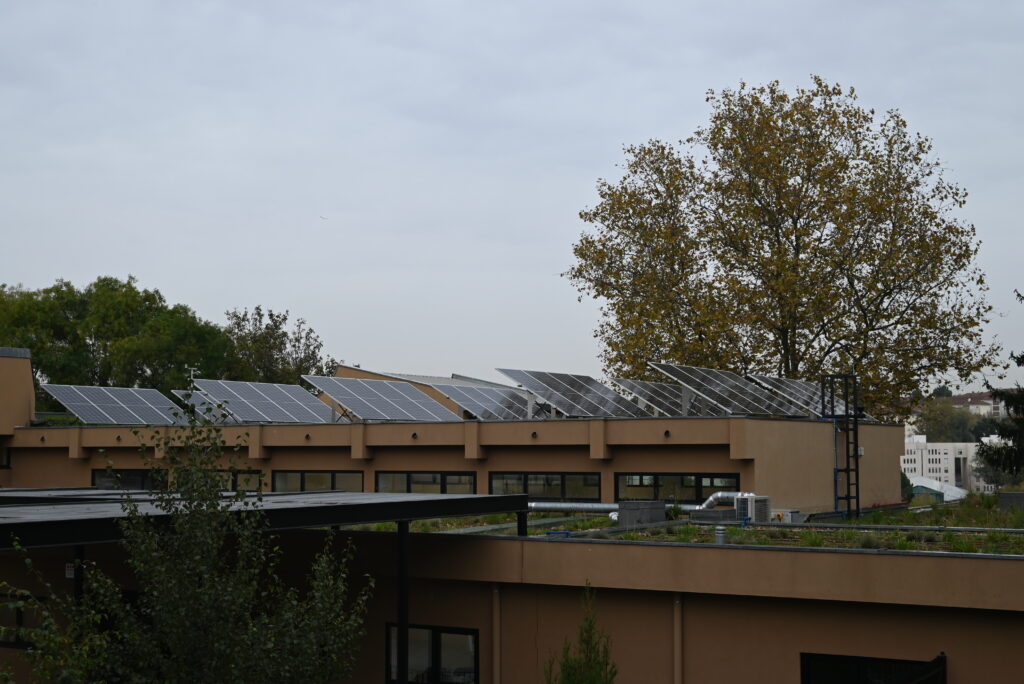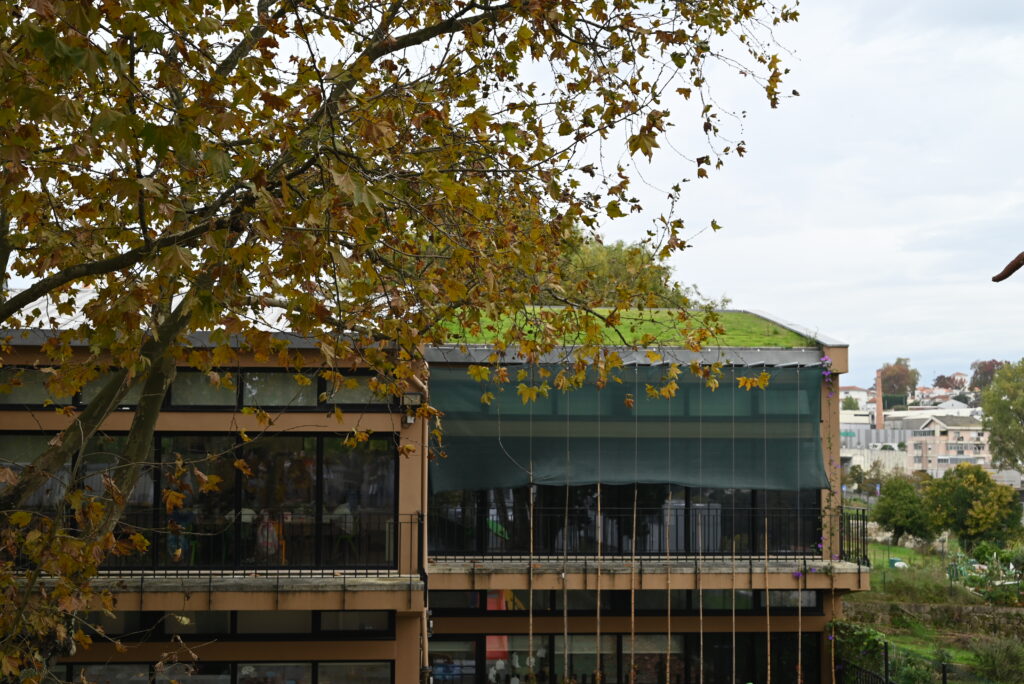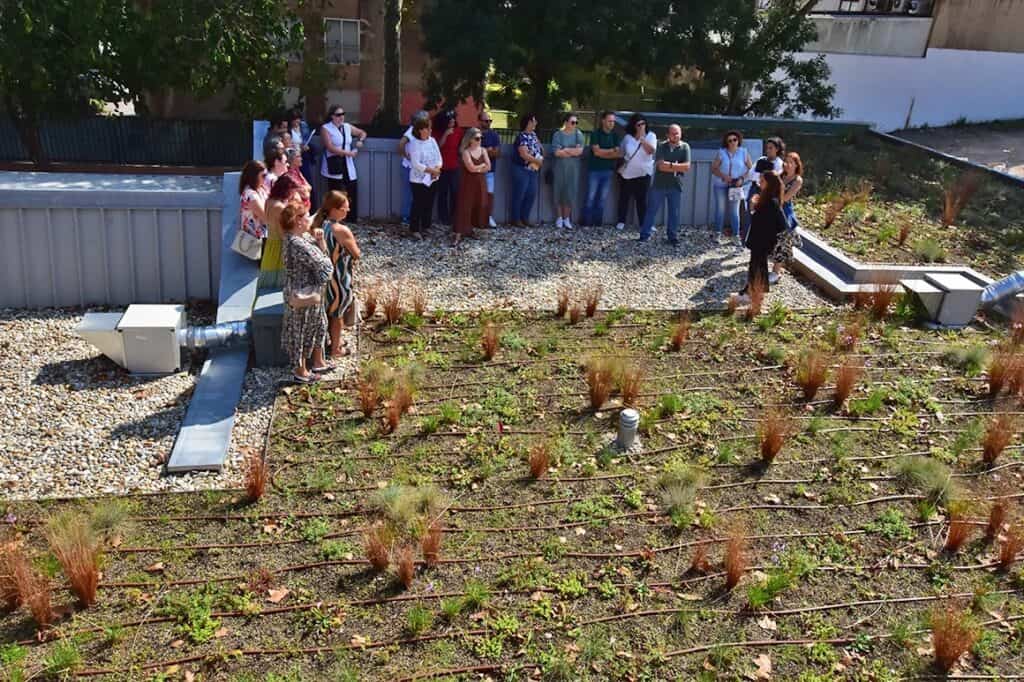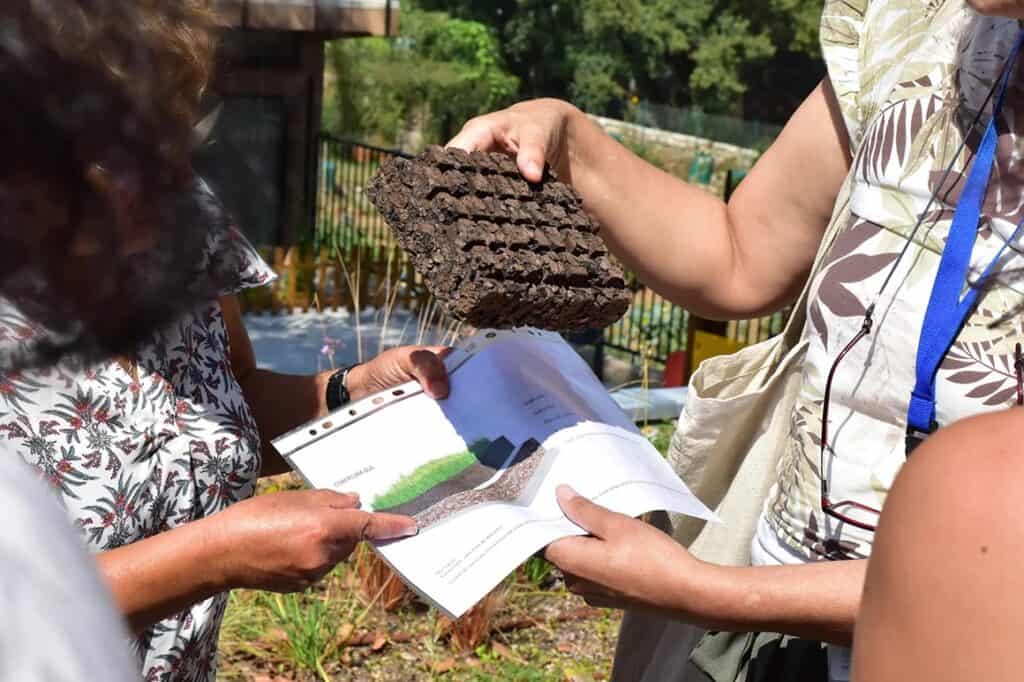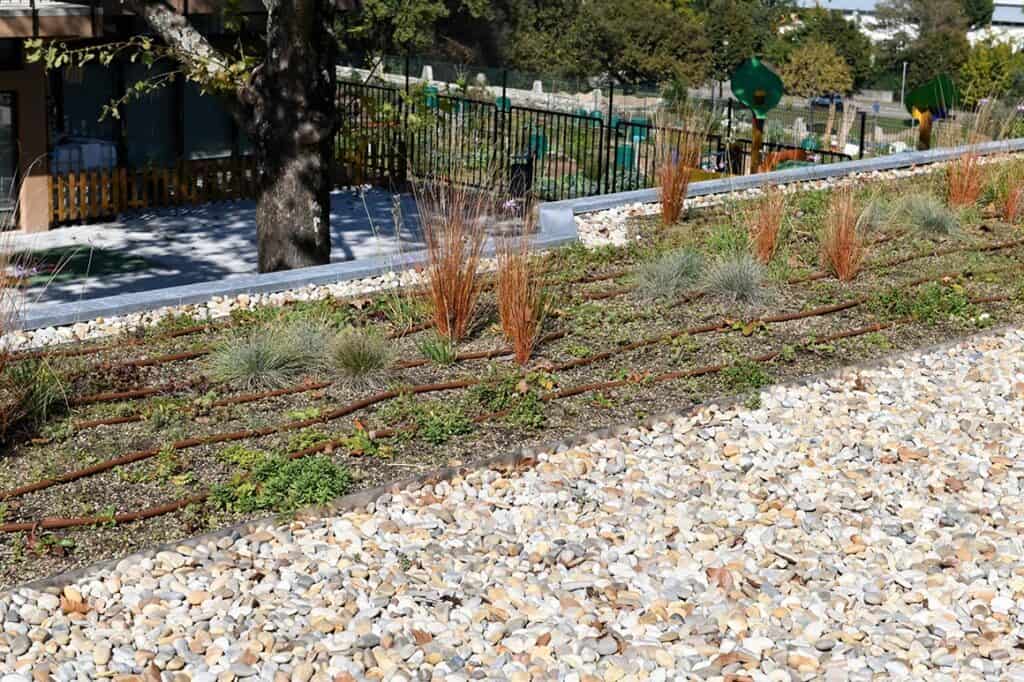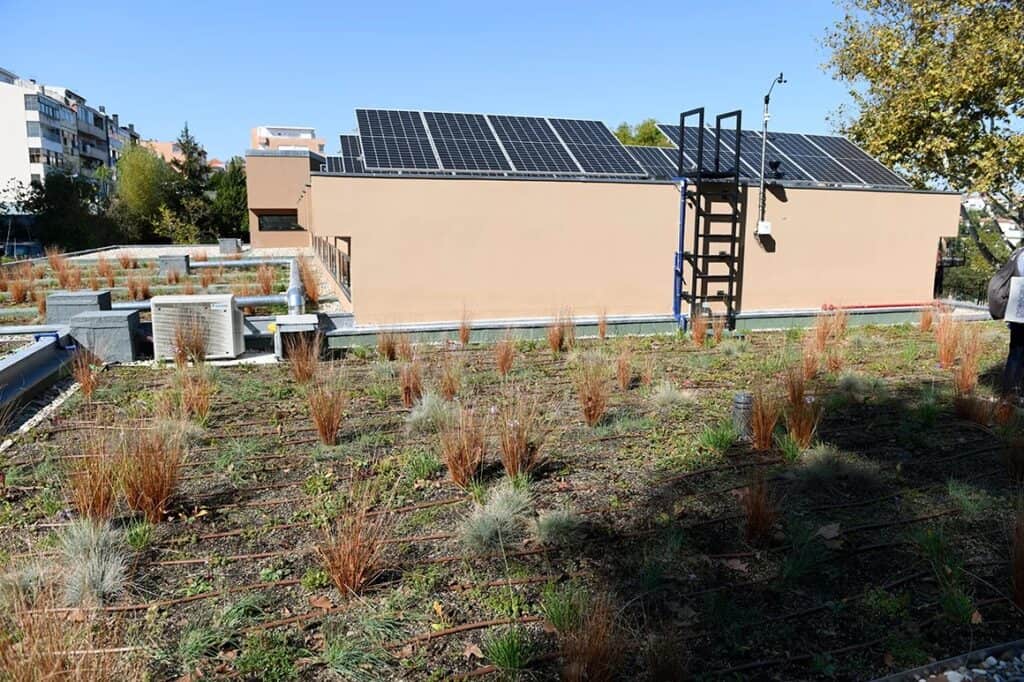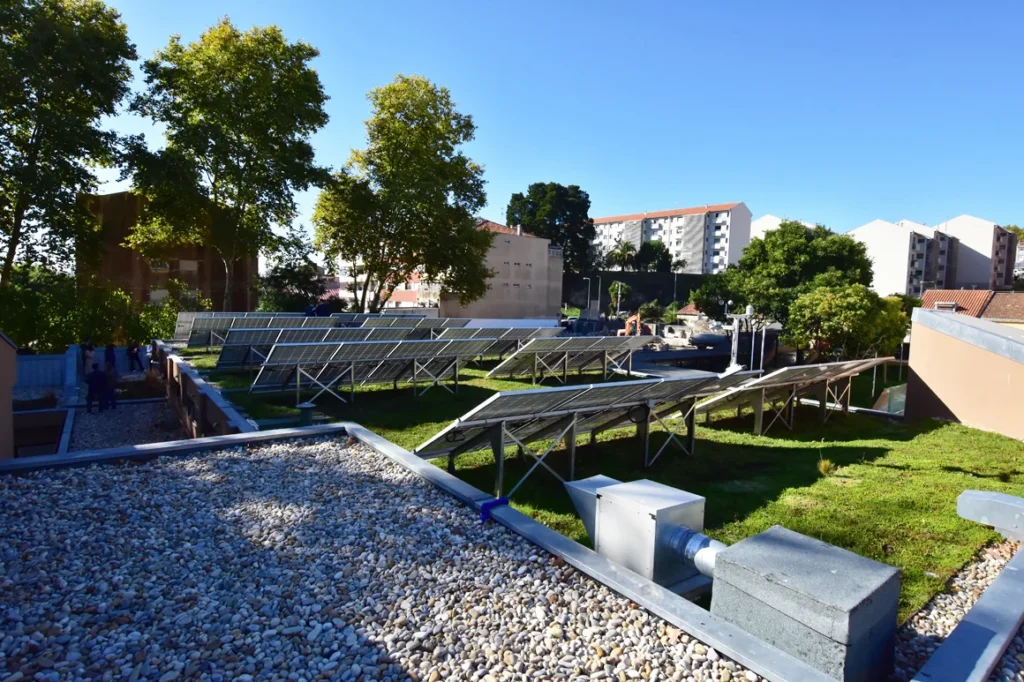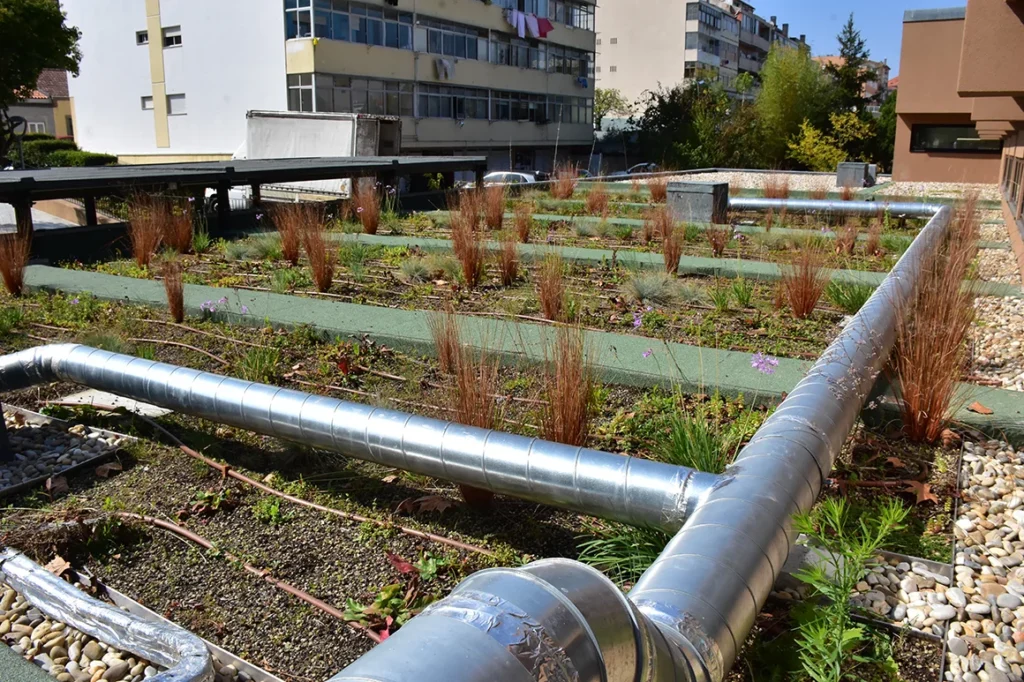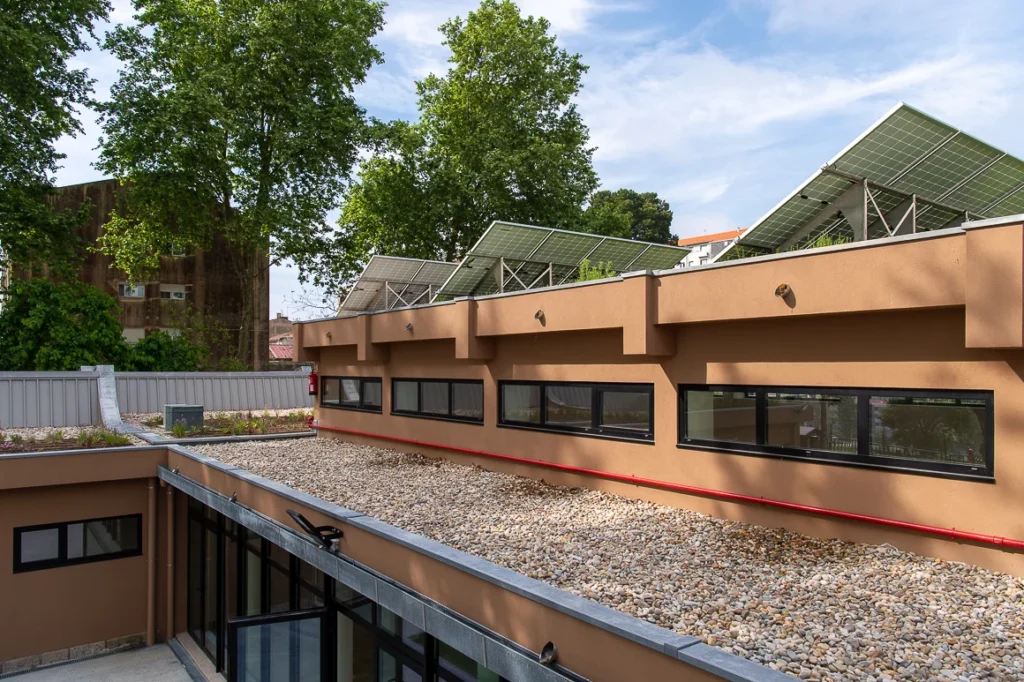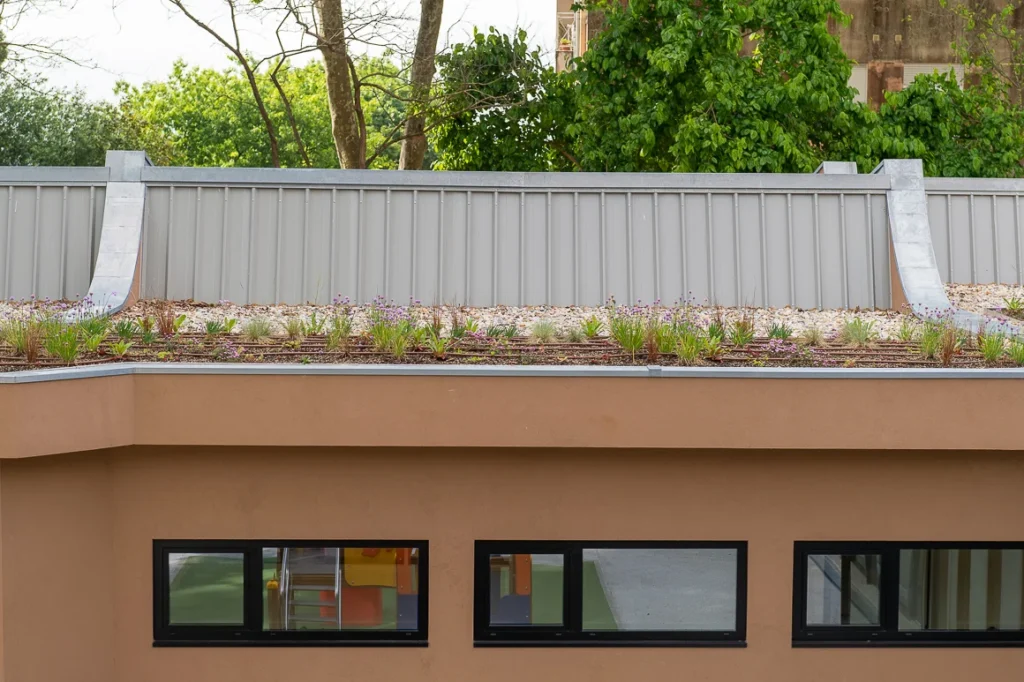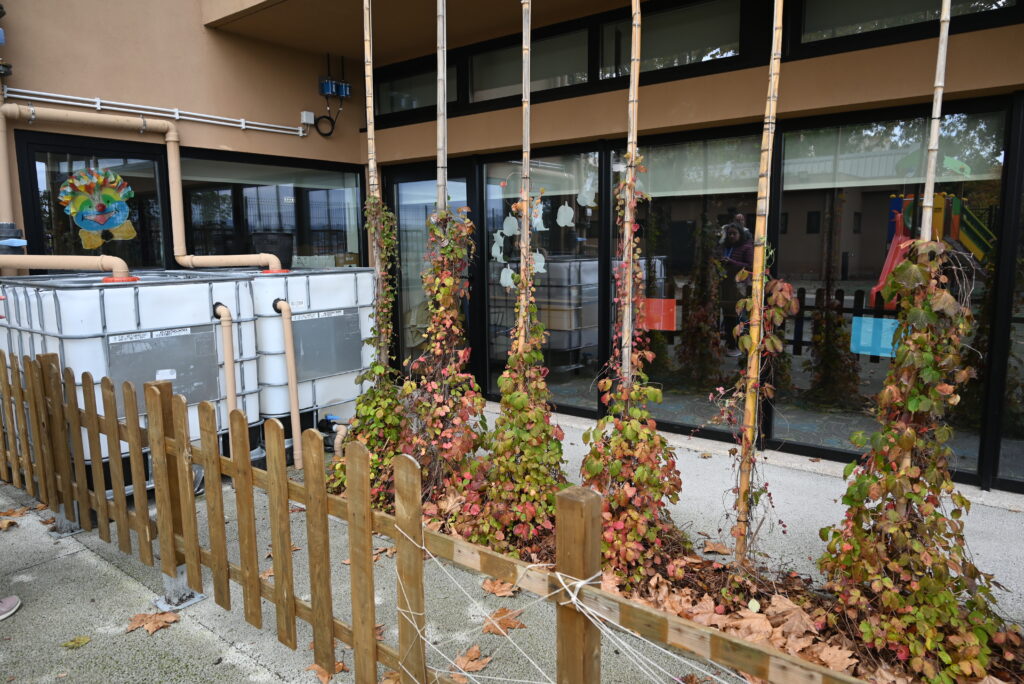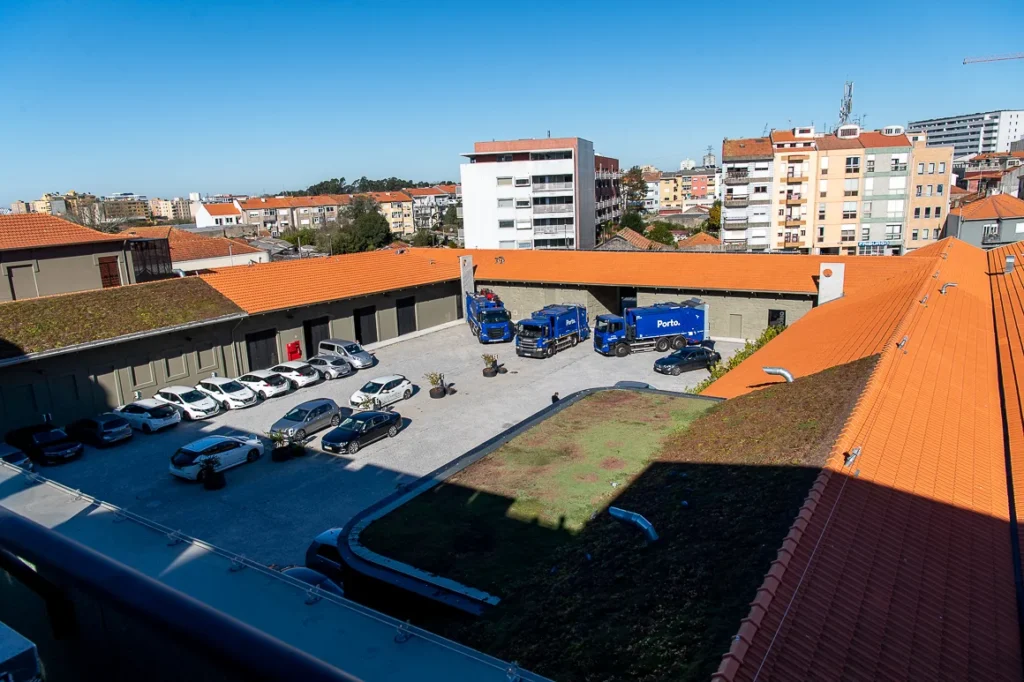The Falcão Elementary School served as a pilot building to receive a set of nature-based solutions specially designed and created to increase indoor bioclimatic comfort and, at the same time, boost resilience to climate change. The main solutions implemented were: three green roofs, a green wall and a pond. These solutions were complemented by the installation of photovoltaic panels to produce green electricity for self-consumption.
The green roofs were studied and analysed by the Associação Nacional de Coberturas Verdes (National Green Roof Association) as part of the Projeto Quinto Alçado do Porto (PQAP), whose main objective was to define a strategic model for integrating green roofs into the environmental and urban strategy of the city of Porto.
The interventions were carried out as part of the My Building is Green (mBiG) project. This project consists of adapting school and social service buildings to climate change in three very different climatic regions (Porto and Alentejo in Portugal and Badajoz in Spain).
